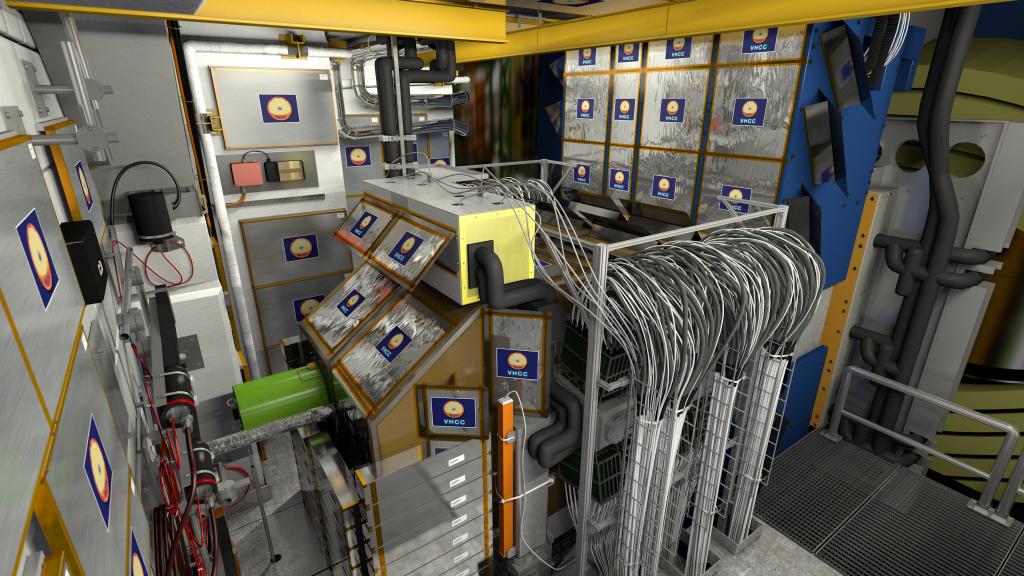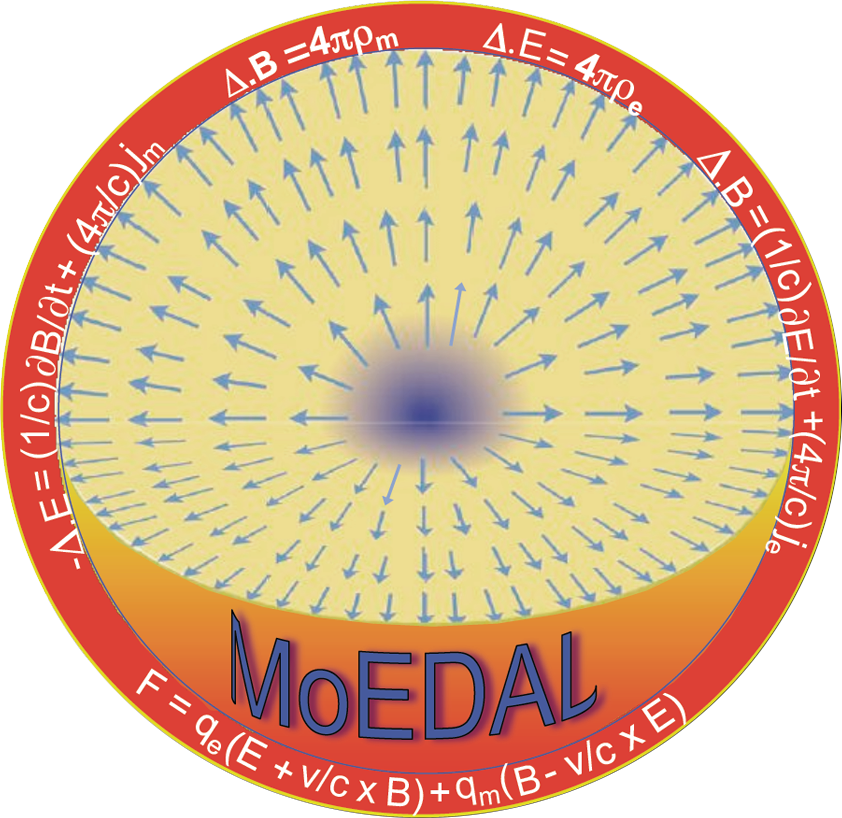The MoEDAL detector is comprised of an array of plastic Nuclear Track Detectors (NTDs) deployed around the ( Point-8 ) intersection region of the LHCb detector, in the VELO (VErtex LOcator) cavern. The array consists of NTD stacks, ten layers deep, in Aluminium housings attached to the walls and ceiling of the VELO cavern. The maximum possible surface area available for detectors is around 25 m2, although the final deployed area could be somewhat less due to the developing requirements of the infrastructure of the LHCb detector. A more detailed description of the MoEDAL detectors and the track-etch detector technology, can be found in the MoEDAL technical design document.

When a charged particle crosses a plastic nuclear track detector it produces damages at the level of polymeric bounds in a small cylindrical region around its trajectory forming he so-called latent track. The damage produced is dependent on the energy released inside the cylindrical region i.e. the Restricted Energy Loss (REL) which is a function of the charge Z and β=v/c (c the velocity of light in vacuum) of the incident highly ionizing particle (ion). When the velocity of the incident ion is < 1x10−2 c the restricted energy loss is equal to the total energy loss of the particle in the medium; otherwise, only a fraction of the electronic energy loss leading to the formation of δ-rays with energies lower than a cut-off energy Tcut cut is efficient for the track formation. The REL can be computed from the Bethe-Block formula restricted to energy transfers T <Tcut .
The subsequent etching of the solid nuclear detectors leads to the formation of etch-pit cones. These conical pits are usually of micrometer dimensions and can be observed with an optical microscope. Their size and shape yield information about charge, energy and direction of motion of the incident ion.
New Addition to MoEDAL – The Very High Charge Catcher
A new addition to the MoEDAL detector described in the TDR is the “The Very High Charge Catcher” (VHCC) which is designed to increase the acceptance for very highly ionizing particles (eg g > 1). The VHCC is comprised of flexible, thin bendable, light, plastic stacks. Each VHCC stack consists of 3 Makrofol (lexan) sheets each 100 mm thick encased in a Al- foil (25 mm thick) envelope (to inhibit fire). The normal size of each stack will be 50 x 50 cm2 . The thickness of each stack is 0.65% of a radiation length, total.
